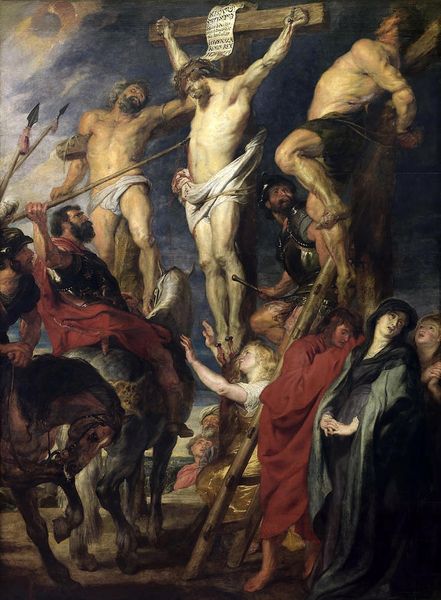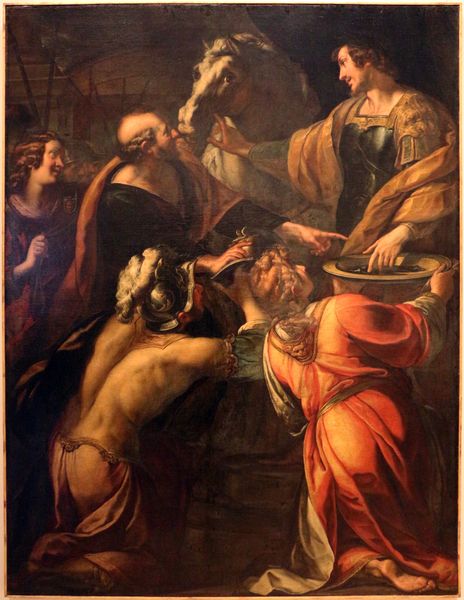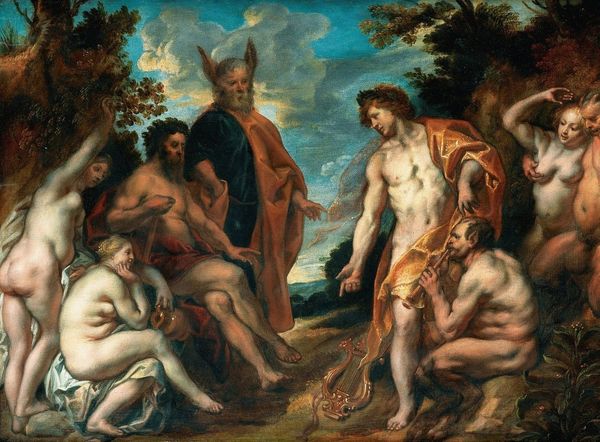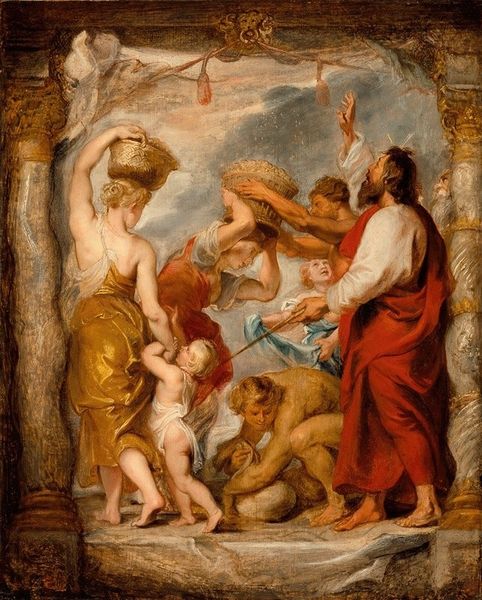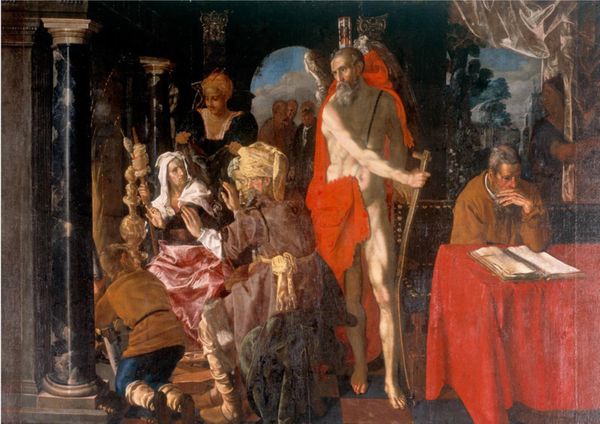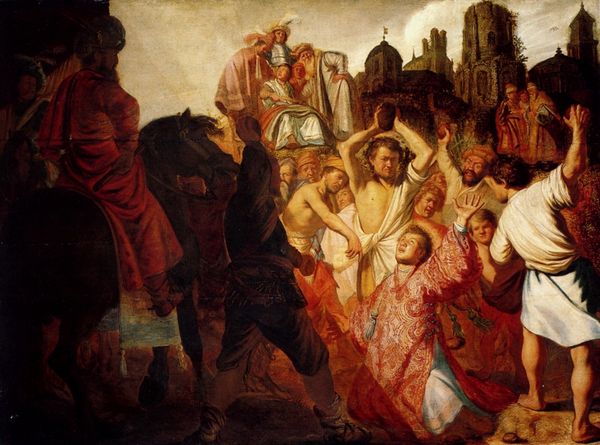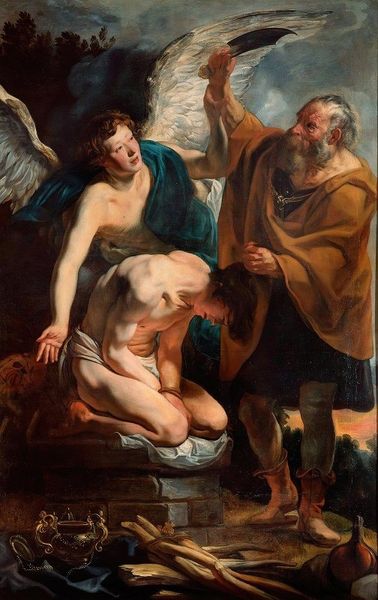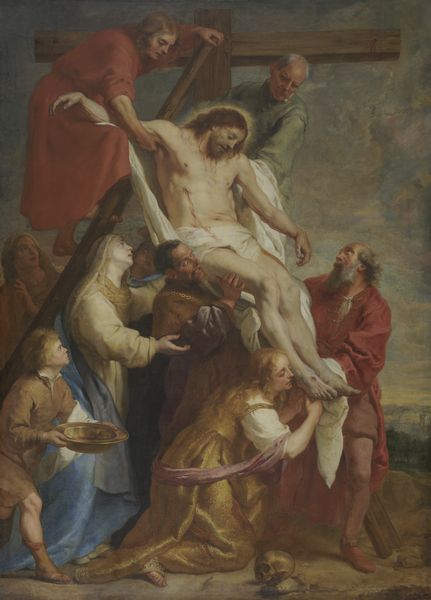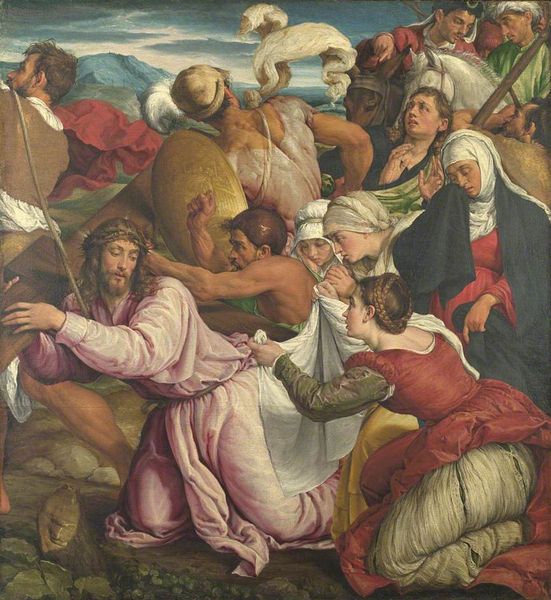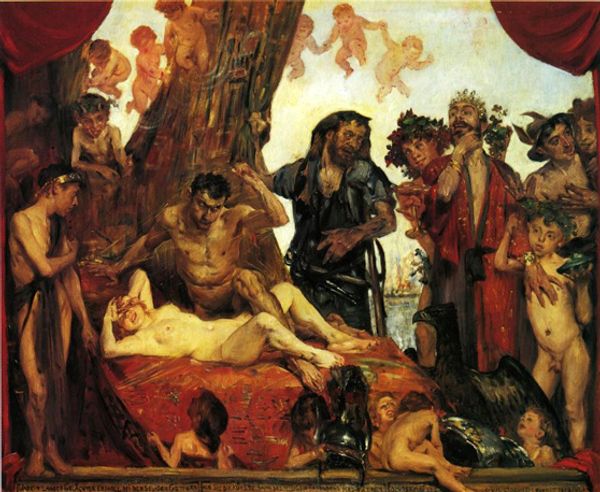
painting, oil-paint
#
portrait
#
narrative-art
#
painting
#
oil-paint
#
oil painting
#
history-painting
#
academic-art
#
portrait art
Copyright: Public Domain: Artvee
Curator: The painting before us, executed in 1873, is titled "Die Loge Johannis" by Hans Canon. Editor: Immediately striking is the sheer density of figures crowded into the frame. The light, focused predominantly on the upper cluster, pushes the darker lower figures forward, creating an almost uncomfortable sense of visual pressure. Curator: Yes, and this density echoes the complex symbolic language at play here. Canon has gathered a rather intriguing cast. He’s not simply painting figures but layering historical and mythical archetypes to form a commentary on faith and authority. Notice the figure enthroned, he is both John the Baptist and the Old Testament god, and alongside the Christ Child. It’s a powerful blend of pre-Christian and Christian symbology, resonating with cultural memory and our continuous search for truth and spiritual guidance. Editor: Structurally, the painting presents an unstable hierarchy. The eye is pulled in multiple directions—up to the divine triad, then down to the fragmented and almost dissolving mass of religious figures. There is no clearly defined focal point or narrative anchor, and it becomes visually chaotic. What exactly is Canon saying through this pictorial breakdown? Curator: He's definitely dismantling established religious narratives. I see in the work a critical look at organized religion, suggesting perhaps the dilution or corruption of pure spiritual ideals. Editor: Perhaps. But the meticulous brushwork and formal elements do align with Canon's background in academic art. His handling of light and shadow across these complex textures is incredibly precise and the details such as embroidery, manuscripts and crowns show meticulous care and are executed brilliantly. The artist isn’t necessarily critiquing so much as creating a grand synthesis of ideas, of image, which seems both reverent and interrogative. Curator: And this reverence, paradoxically, is where the cultural critique emerges, by putting the sacred traditions into question by layering them. The layering is the argument. Editor: I suppose it's the painting's inherent ambivalence, both structurally and thematically, that holds such long lasting fascination for its audience. Curator: Precisely. In effect, it leaves one pondering on the weight of religious history and its impact on both the collective and the individual conscience.
Comments
No comments
Be the first to comment and join the conversation on the ultimate creative platform.

